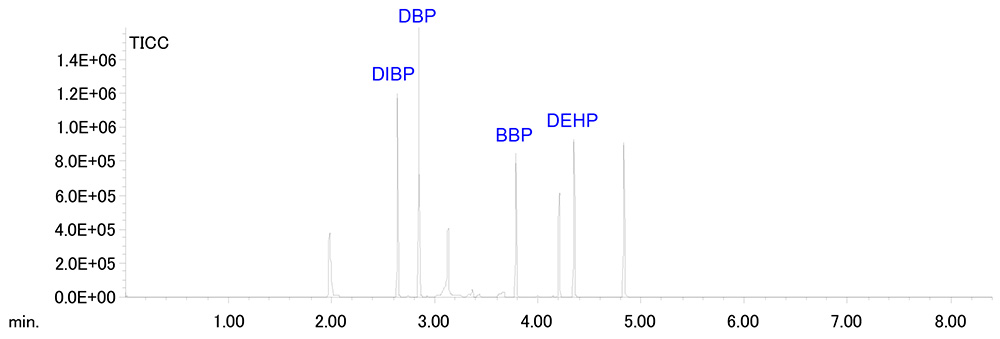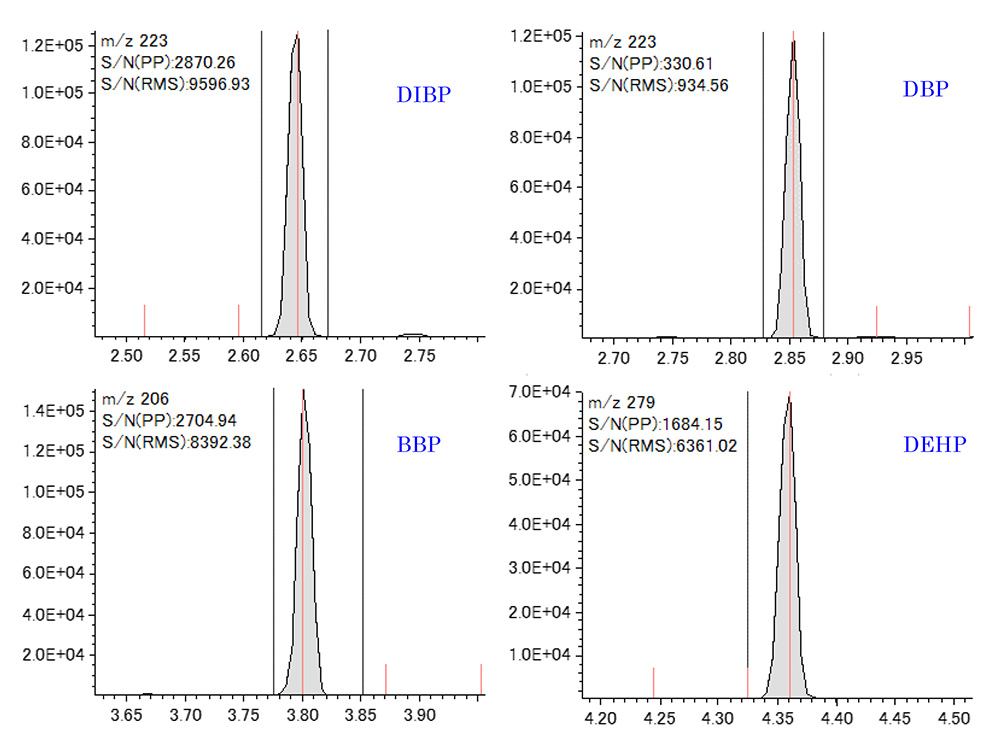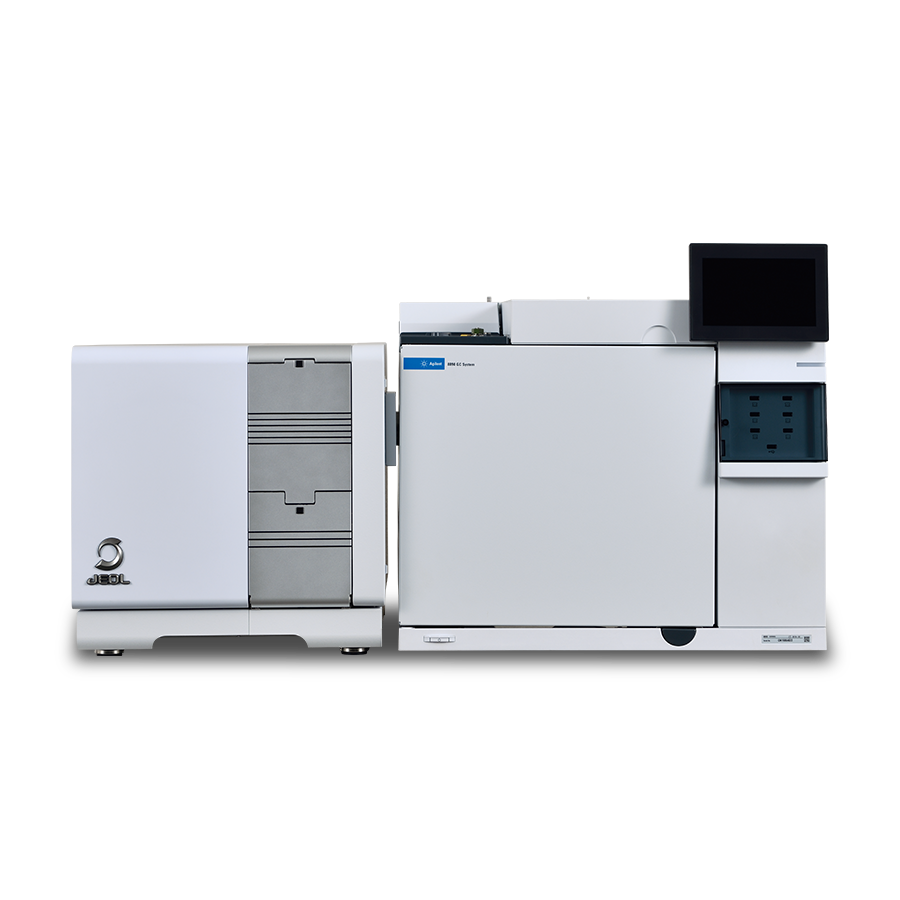Rapid analysis of phthalates for RoHs2 by Py-GC-MS
MSTips No. 298
MSTips No. 298
Overview
Phthalates are used as plasticizers for resins, but their use is restricted by various regulations due to concerns about their effects on the human body as endocrine disruptors. The revised RoHS Directive (RoHS2), which came into effect on July 22, 2019, regulates four phthalats (diisobutyl phthalate: DIBP, dibutyl phthalate: DBP, butyl benzyl phthalate: BBP, di-2-ethylhexyl (DIBP, DBP, butyl benzyl phthalate: BBP, di-2-ethylhexyl phthalate: DEHP) were regulated. As measurement methods for these substances, the solvent extraction-GC/MS method for precise analysis and the Py-GC/MS method for screening are specified in IEC-62321-8. We have attempted a rapid analysis of Py-GC/MS method using JMS-Q1500GC by optimizing Py and GC oven conditions, and achieved a cycle time of 14.75 min per measurement. Here, we report the results.

Figure1. Cycle time details
Experiment
PVC (NMIJ CRM 8152-a, about 0.1%), a certified reference material for the analysis of phthalates, was used as the measurement sample. A 0.50 mg sample was measured by Py-GC/MS to confirm the peak separation of the 4 phthalates and the repeatability of the area values at n=5. Table 1 shows the measurement conditions for Py-GC/MS.
Table 1. PY-GC/MS measurement conditions
| PY | |
|---|---|
| Sample weight | 0.50mg |
| Furnace Temp. | 150°C→200°C/min→320°C(0.5min) |
| GC | |
| Column | ZB-1HT 15m length, 0.25mmi.d. 0.1μm film thickness (Phenomenex Inc.) |
| Gas flow | He 1.0mL/min, constant flow |
| Injection mode | Split 1/50 |
| Inlet Temp. | 300°C |
| Oven temp. | 80°C→50°C/min→200°C→25°C/min→350°C |
| MS:JMS-Q1500GC | |
|---|---|
| Ion source temp. | 250°C |
| Interface temp. | 300°C |
| Ionization | EI, 70eV |
| Measurement mode | Scan m/z 50 to 600 with SIM DIBP: m/z 149, 205, 223 DBP: m/z 149, 205, 223 BBP: m/z 91, 149, 206 DEHP: m/z 149, 167, 279 ※Under line : Quantitative ion |
Results
The TIC chromatogram is shown in Figure 2. The 4 phthalates could be well separated.

Figure2. TIC Chromatogram
Next, the extracted ion chromatogram (EIC) of the quantitation ion for each of the 4 phthalates is shown in Figure 3. All components showed good detection sensitivity.

Figure3. Extracted Ion Chromatograms of phthalates in PVC
Finally, the area values of each measured sample at n=5 are shown in Table 2. For each phthalate, good results were obtained with a coefficient of variation of less than 10%.
Table 2. Repeatability of area value
| #1 | #2 | #3 | #4 | #5 | Average | Standard deviation | CV% | |
|---|---|---|---|---|---|---|---|---|
| DIBP | 178051 | 168249 | 158209 | 157911 | 167761 | 166036 | 8359 | 5.0% |
| DBP | 166170 | 150082 | 152769 | 142665 | 148792 | 152096 | 8695 | 5.7% |
| BBP | 210573 | 212346 | 205639 | 205776 | 243147 | 215496 | 15735 | 7.3% |
| DEHP | 110307 | 108873 | 97884 | 93277 | 102132 | 102495 | 7212 | 7.0% |
Summary
A rapid analysis of four phthalates, which are regulated by RoHS2, by Py-GC/MS method was attempted and the data was obtained with a cycle time of 14.75 min based on good detection sensitivity and repeatability.
Solutions by field
Related products
Are you a medical professional or personnel engaged in medical care?
No
Please be reminded that these pages are not intended to provide the general public with information about the products.

